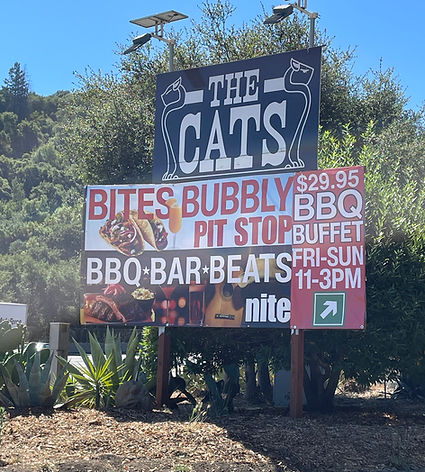Meet Stephen Payne

The Howling Wilderness
Stephen Payne holds a doctorate in Public Historical Studies from UC Santa Barbara, a master’s degree in History from San Jose State University, and a baccalaureate in Anthropology from UC Santa Cruz. Stephen has also taught Santa Clara County and California history courses at local colleges for many years. Stephen’s family goes back five generations in Santa Clara County. The McClellan farm buildings in Steven’s Creek Park belonged to his great, great grandparents, who were settlers in 1849. In 1852 his great grandfather arrived in the valley, settling in Los Gatos. In the mid-1870s, the family purchased a farm near Campbell, where Payne Avenue is today.
Check out KSCM
Live Moutain Radio
KSCM is an Internet based radio station streaming from the Santa Cruz Mountains. They offer a variety of musical styles, events, and live shows. Not only do they play modern music, they also offer the history of music in the Santa Cruz Mountains - think about the Chateau Liberte, the Doobie Brothers, Moby Grape. and so many more classic bands. KSCM is also about local history such as Patchen and Mountain Charlie. See more at KSCMRadio.com.

LPM Volunteer
Nancy Cole has been a Santa Cruz Mountain resident for over 35 years, having discovered the area through the Summit Riders horseman’s group over 50 years ago. Nancy’s initial experiences were riding horses from property to property to visit, do brunches, lunches, dinners and overnight camping with the horses. She fell in love with the mountains from the very first of her many adventures. Nancy’s long career as a realtor specializing in mountain properties has spanned 45 years. Her work exposed her to many superb mountain people who were experts in their field, many self taught. Wells, septics, roads, grading, geology, all the many trades that sustain mountain living.
Hello, World!
By Debra Staab

In 2025, communications are ubiquitous, instantaneous, and available 24 x 7 x 365. We can call, email, text, tweet, toot, Tik Tok, or send documents and packages via overnight express to anywhere in the world. The latest global news appears on our phones as soon as it happens. With the tap of a finger we easily share photos and updates with family and friends. We live in a highly connected fast-paced world. Early Communications In years past, sending messages was not as easy as it is today. Runners and riders on horseback had to work in relay teams to send information over long distances. As early as 3,000 years ago, messenger pigeons, with notes attached to their legs, were used to announce the winners of the Ancient Olympics. Genghis Khan used them in Baghdad around 1150. Paul Reuter, founder of Reuters press agency, used a fleet of some 45 birds to send news and stock prices between Brussels and Aachen in 1860. Pigeon-post was used during various wars and
The Cats Roadhouse
By Debra Staab
Located on the outskirts, just a mile south of Los Gatos town at 17533 Santa Cruz Highway, sits a rustic two-story structure covered in brown shake with brick trim along the bottom sporting multiple signs. As you enter the parking lot a large billboard tells us that this is The Cats and that it is a “BITES BUBBLY PIT STOP” with “BBQ*BAR*BEATS nite” and a “$29.95 BBQ BUFFET FRI-SUN 11-3PM”. On the roof near the center of the building, the word “CATS” is spelled out in large red capital letters. Below that, over the entrance flanked on both sides by small white cement wildcats (bobcats) mounted on brick pedestals, “THE CATS” appears in large white capital letters enclosed in tall thin cat silhouettes. Below the five second-story windows trimmed in red, we see more signs in white capitals - on the left “TAVERN” and on the right “SALOON”, “WINE”, and “SPIRIT”. Between the front brick pedestals sits one more sign that reads “WELCOME TO THE SALOON, RESTAURANT & TAVERN”.




.png)